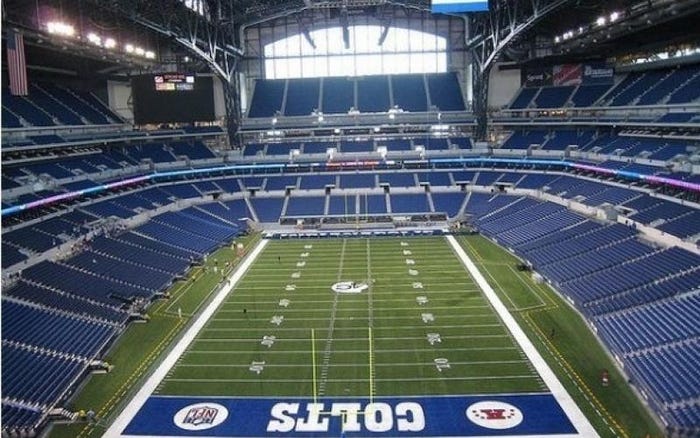9 Security Technologies For Super Bowl And Beyond
From the Super Bowl to the World Cup, sports fans are being watched in new ways. Consider these technologies changing sports security.
February 2, 2012

Securing a major sporting event can be a nerve-wracking task for public safety agencies. The threat of terrorism looms large, of course, but so do unexpected scenarios that can quickly spiral out of control, such as the Feb. 1 soccer riot in Cairo, Egypt that claimed the lives of more than 70 people.
Preparing for an event that draws tens--and sometimes hundreds--of thousands of often unruly fans requires a skillful blend of human and machine surveillance. Digital technology is increasingly playing a major role in sports security operations.
At Sunday's Super Bowl in Indianapolis, for instance, as many as 1,000 police officers will be equipped with smartphones and other mobile devices, the Associated Press reports. Police will be able to wirelessly transmit photos and video to a new command center and to their fellow officers in cop cruisers.
When drawing up security plans for major events, authorities use visualization techniques, including specialized software that helps determine the best ways to protect both spectators and the facility.
"If you look at the stadium as a target, it's a good idea to create a visual of the stadium downtown, and then create a couple of rings around it," says Steve Surfaro, security industry liaison for Axis Communications, a manufacturer of network video products.
The closer you get to the arena or stadium--which on Super Bowl Sunday will be Lucas Oil Stadium in Indianapolis--the tighter the security. Law enforcement agencies monitor the outer perimeter as well, searching for suspicious activities.
"One of the things they look for is trucks, vehicles that are weighed down. Every truck, every van has to be checked," says Surfaro.
"Any normal vehicle is visually inspected. Police officers have specialized training in being able to identify some disastrous-producing item, like explosives or weapons. They'll also use the canine force to sniff out weapons and bombs in certain areas. And they'll have canines all over the stadium, doing spot checks," Surfaro adds.
High-definition cameras are beginning to play a major role in stadium and city surveillance, too. "HDTV is going to be a really amazing deployment," says Surfaro. "The richer the video information, the better it is for forensic review." The vastly superior image quality of HD cameras helps security staff use live video feeds as an additional set of eyes.
The latest video surveillance systems are growing more intelligent as well, allowing software detection of potential threats.
"These days, the more advanced systems are looking like Google search," says Surfaro. "They're intelligent enough that in certain cases you can enter basic terms like 'red,' 'small,' and 'car,' as well as a timeframe. The software will then give you all the red vehicles that the cameras see within a certain period of time."
Consider these other ways that technology is changing sports security operations.

